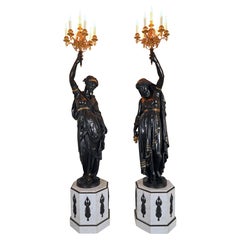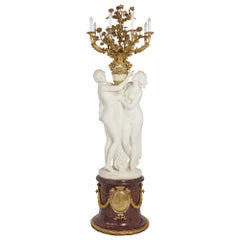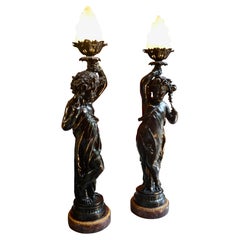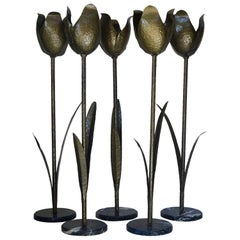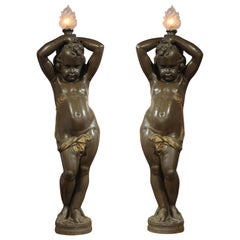Albert Ernest Carrier-Belleuse Lighting
Albert-Ernest Carrier-Belleuse was a French sculptor. Carrier-Belleuse was born on 12th June 1824 at Anizy-le-Château, Aisne, France. He began his training as a goldsmith's apprentice. He was a student of David d'Angers and briefly studied at the École des Beaux-Arts. His career is distinguished by his versatility and his work outside France, in England between 1850–55 and in Brussels around 1871. His name is perhaps best known because Auguste Rodin worked as his assistant between 1864 and 1870. The two traveled to Brussels in 1871 and by some accounts, Rodin assisted Carrier-Belleuse's architectural sculpture for the Brussels Stock Exchange.
Late 19th Century French Napoleon III Antique Albert Ernest Carrier-Belleuse Lighting
Marble, Bronze
Late 19th Century French Neoclassical Antique Albert Ernest Carrier-Belleuse Lighting
Marble, Ormolu
Late 19th Century French Napoleon III Antique Albert Ernest Carrier-Belleuse Lighting
Bronze
Mid-20th Century French Mid-Century Modern Albert Ernest Carrier-Belleuse Lighting
Marble, Iron
Mid-19th Century French Antique Albert Ernest Carrier-Belleuse Lighting
Bronze
1870s French Country Antique Albert Ernest Carrier-Belleuse Lighting
Wrought Iron
20th Century American Art Deco Albert Ernest Carrier-Belleuse Lighting
Chrome
19th Century Italian Baroque Antique Albert Ernest Carrier-Belleuse Lighting
Bronze
Early 1900s French Neoclassical Revival Antique Albert Ernest Carrier-Belleuse Lighting
Iron, Zinc
Early 1900s American Empire Revival Antique Albert Ernest Carrier-Belleuse Lighting
Bronze
19th Century Japanese Rococo Antique Albert Ernest Carrier-Belleuse Lighting
Bronze
1970s American Modern Vintage Albert Ernest Carrier-Belleuse Lighting
Brass
Early 1900s French Neoclassical Revival Antique Albert Ernest Carrier-Belleuse Lighting
Marble, Iron
Late 19th Century French Neoclassical Antique Albert Ernest Carrier-Belleuse Lighting
Bronze
1880s French Antique Albert Ernest Carrier-Belleuse Lighting
Iron
